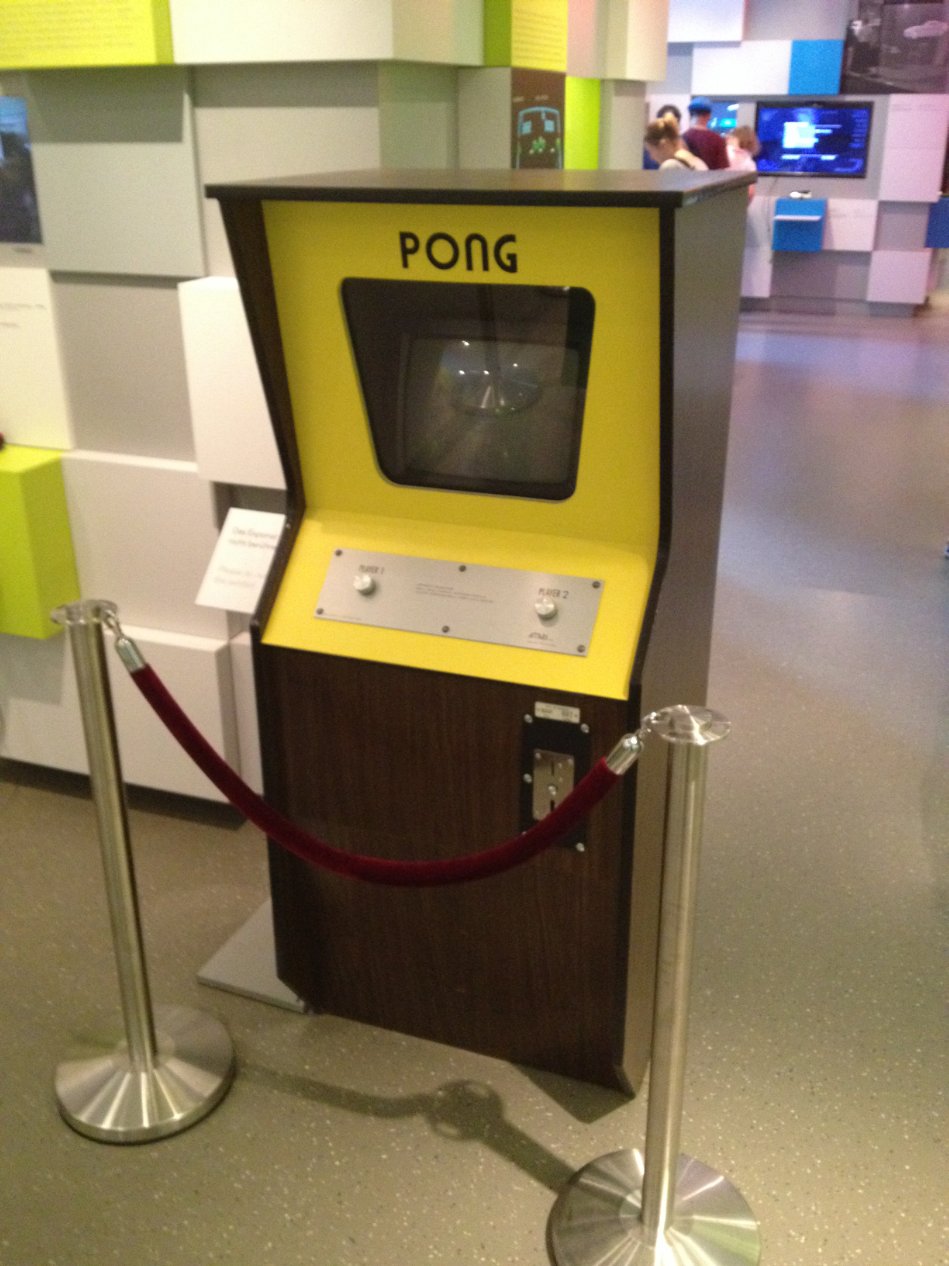(English version below)
„Videospiel“ und Kunst? Man denkt an PAC-MAN, vielleicht Rollenspiele wie ULTIMA oder WORLD OF WARCRAFT, Gewaltspiele wie DOOM oder COUNTERSTRIKE.
 Das ist aber nicht alles und auch die genannten Spiele sind, ja, Kunst – im wahrsten Sinne des Wortes. Amalgamierungen von audio-visuellen Elementen, technischer Programmierleistung, einem Interface als Mensch-Maschine-Schnittstelle und letztlich den Spielerinnen und Spielern.
Das ist aber nicht alles und auch die genannten Spiele sind, ja, Kunst – im wahrsten Sinne des Wortes. Amalgamierungen von audio-visuellen Elementen, technischer Programmierleistung, einem Interface als Mensch-Maschine-Schnittstelle und letztlich den Spielerinnen und Spielern.
Die Kunst selbst aber hat von Anfang an Spiele ebenso für sich genutzt wie die jeweils neuesten Hardwareplattformen und deren technische Möglichkeiten. Zuvor waren die noch neue Videotechnik und davor Dias beliebte Werkzeuge der visuell tätigen Künstler.
Der Heimcomputer der 1980er Jahre, der Commodore Amiga, wurde 1985 von niemand geringerem als Andy Warhol vorgestellt, einem der bekanntesten Pop-Art-Künstler der Welt – er malte BLONDIE (Debbie Harry) (Danke an M. C. Battilana von Cloanto für die Genehmigung, den folgenden Ausschnitt zu zeigen – siehe unten).
Was das „Videospiel“ ist und sein soll, welchen gesellschaftlichen Stellenwert es einnimmt, darf immer wieder neu bewertet werden. Im Schwerpunkt „Kunst und Spiele“ werden ungewöhnliche künstlerische Konzepte beleuchtet:
„Elegy for a Dead World“ der Bostoner Dejobaan-Games erzählt eine märchenhafte und traurige Geschichte über einen ausgestorbenen Planeten doch… es sind die Spieler, die diese Geschichte durch ihren Input erzählen, nicht die Spieleentwickler und es sind die Spieler, die mehr mit dieser gestorbenen Welt zu tun haben als sie denken mögen…
„Bounden“ entführt Spieler in die Welt der klassischen Musik und des Balletts. Mit Smartphones „spielen“ Spieler eine Ballettaufführung. Beispiele für moderne Verbindungen von Kunst und Spiel wie dieses deuten an, wie vielfältig das Medium „Videospiel“ ist und welche Möglichkeiten es eröffnet, kulturell und interkulturell über Inhalte und Emotionen – und doch meistens ohne Worte – Menschen zu berühren und zu verbinden.
Kunst der anderen Art sind „Retro-Spiele“ – heute entwickelt und gespielt auf Hardware, die seit 10 oder mehr Jahren nicht mehr entwickelt oder verkauft wird, auf sog. „abandoned platforms“, verlassenen Spielekonsolen. Einige der prominentesten Entwickler aus dem Lager der Atari-Konsolen wurden in einem Interview versammelt: der Gründer von SONGBIRD-PRODUCTIONS, Carl Forhan und die Entwickler Johannes und Roland Graf von DURANIK. Wer sind sie, warum entwickeln sie moderne Spiele für „antike“ Konsolen und worum geht es beim Retro-Gaming?
Dieser Schwerpunkte möchte unterhalten, überraschen und die Augen öffnen für das Künstlerische im Videospiel, für die digitale Manifestation von Narration und Emotion, für Neugierde und Erstaunen.

+ + +
 The term „video games“ brings up many images, few may have to do with „art“ at first glimpse. One may think of PAC-MAN, maybe role-playing-games like ULTIMA or WORLD OF WARCRAFT, violent games like DOOM or COUNTERSTRIKE.
The term „video games“ brings up many images, few may have to do with „art“ at first glimpse. One may think of PAC-MAN, maybe role-playing-games like ULTIMA or WORLD OF WARCRAFT, violent games like DOOM or COUNTERSTRIKE.
But this is not all there is to it and all these games are also: Art. Amalgamations of audio-visual elements, programming, creative and intuitive user-interfaces and, last but not least, the players themselves.
„Art“ has used computers and games right from the beginning, as it had video-recording technologies and slides or photographs before. The home-computer of the 1980s, the Commodore Amiga, was introduced in 1985 by Andy Warhol himself – painting BLONDIE (Debbie Harry) (a big Thank You goes to M. C. Battilana of Cloanto for allowing us to show this excerpt from their great video & digital archives on DVD – see below).
The thematic special „Arts & Games“ features some interesting artistic concepts.
„Elegy for a Dead World“ by Boston-based Dejobaan-Games tells a surrealistic and sad story about a world that passed away, but it is the players who actually creates the story and he has a deeper involvement than he might think…
„Bounden“ combines games, smartphones, classical music and ballet dancing! Players become part of a ballet play – another exciting example for the multitude of possibilities games offer for artists and the audience alike.
„Retro-Games“ on the other hand are a bit different – developed and consumed today do they run on dated hardware, 10-40 years old, „abandoned platforms“. Some of the most prominent characters from the Atari sector gathered in an interview: Carl Forhan of SONGBIRD-PRODUCTIONS and Roland & Johannes Graf of DURANIK . Who are they and why do they develop „modern games“ for „vintage“ gaming systems? What is „Retro-Gaming“ all about?
This feat ure wants to entertain, to surprise and even open the eyes for the „Art“ of games and in games, digital manifestations of narration and emotion,
ure wants to entertain, to surprise and even open the eyes for the „Art“ of games and in games, digital manifestations of narration and emotion,
curiosity and astonishment.
(Stefan Piasecki)
Notes:
Not only consoles get emulated, also complete vintage computers. One of the biggest and most professional archives is kept by Cloanto / Italy. They support commercial emulation of the world´s most famous home computer of the 1980s and 1990s, the Commodore Amiga: http://www.amigaforever.com
The PONG-cabinet is on display at Berlin´s Computerspielemuseum
The Gobbler-Fossil is on display in Stefans office
Pac-Man Merchandising: Benji Edwards, Vintage Computing and Gaming
